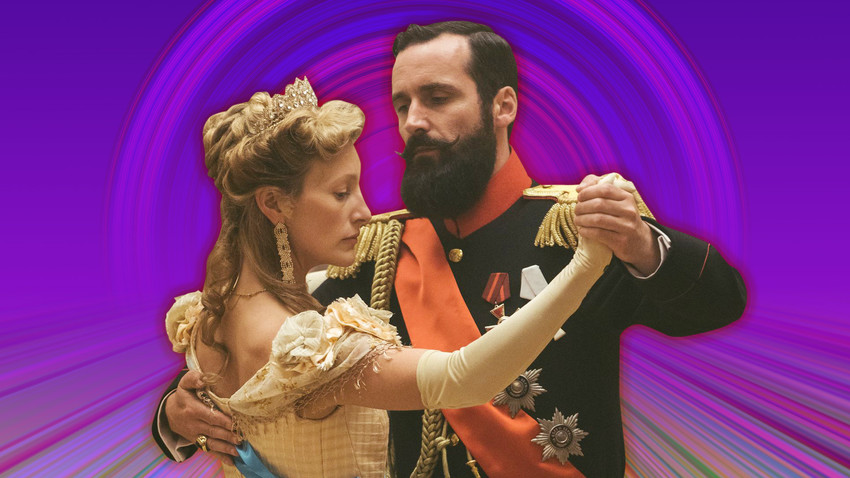
The events described in Netflix’s ‘The Last Czars,’ i.e. the Russian revolution and the murder of the Russian Imperial family, were in reality so complex and multi-layered they simply cannot be conveyed with the means and budget the series offers.

So it’s of no use to elaborate on the vast number of historical inaccuracies in the portrayal of the epoch. The main problem is that the life of the Romanov family in the series is made to look like one of an upper-middle-class American family, and political life of the Russian Empire made to look like it’s a traveling circus, with people jumping, hollering, screaming and fighting all over the place. All the royal ceremonies and proceedings the Russian tsars were subject to in everyday life are dropped altogether, and the living conditions shown are quite modest, while Nicholas and his family lived in luxury.
Yet, there are still some major mistakes we can’t miss.
1) The tsar couldn’t drink in
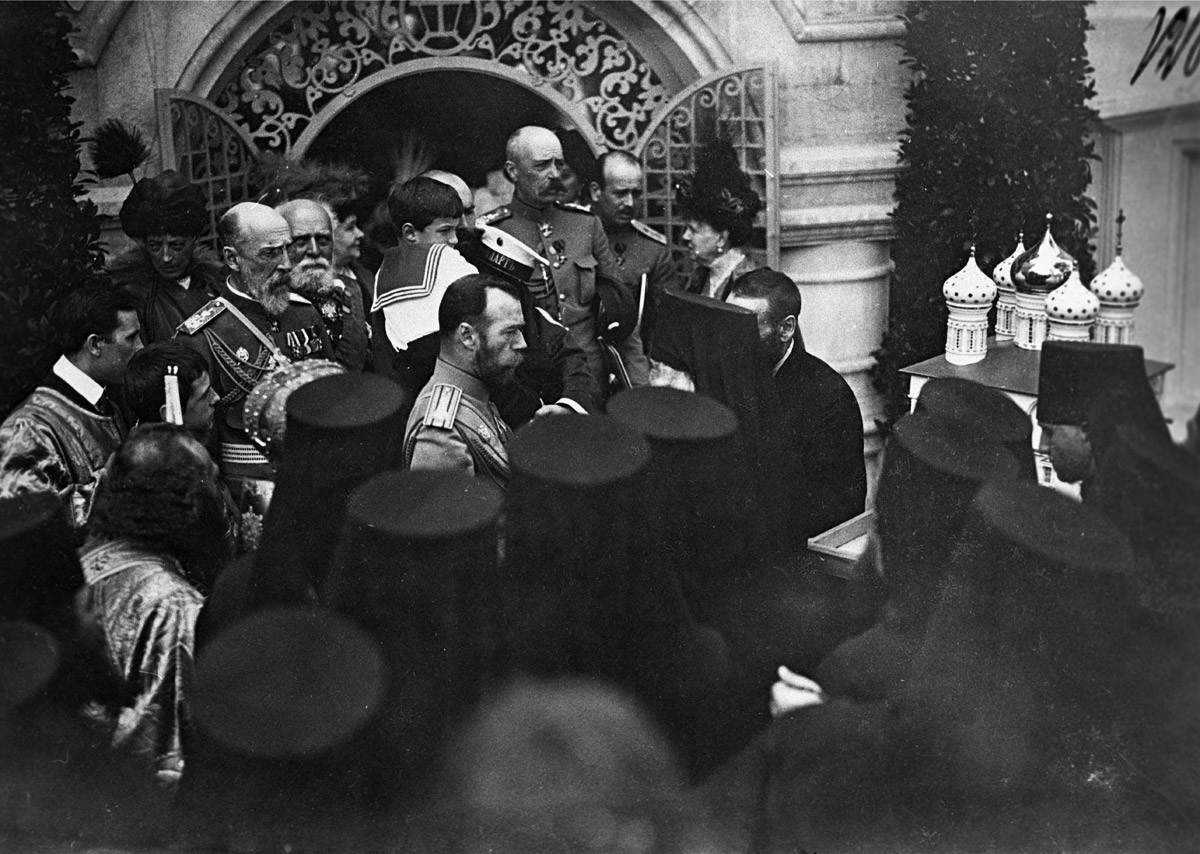
2) Sergey Alexandrovich saying “He stinks!” is impossible
Under no circumstances could Sergey Alexandrovich say, “He stinks!” about the deceased Emperor. This would have led to a vast turmoil in the family.
3) The tsar didn’t control everything
Simon Montefiore, playing the role of
4) The Empress Dowager didn’t crown Empress Alexandra
Maria Fyodorovna is shown putting the crown on Alix’s head and saying, “you’re one of us.” Under no circumstances could this happen in private. The coronation was a public event. Moreover, only the tsar, carrier of the sovereign’s power, could crown his consort, the
5)
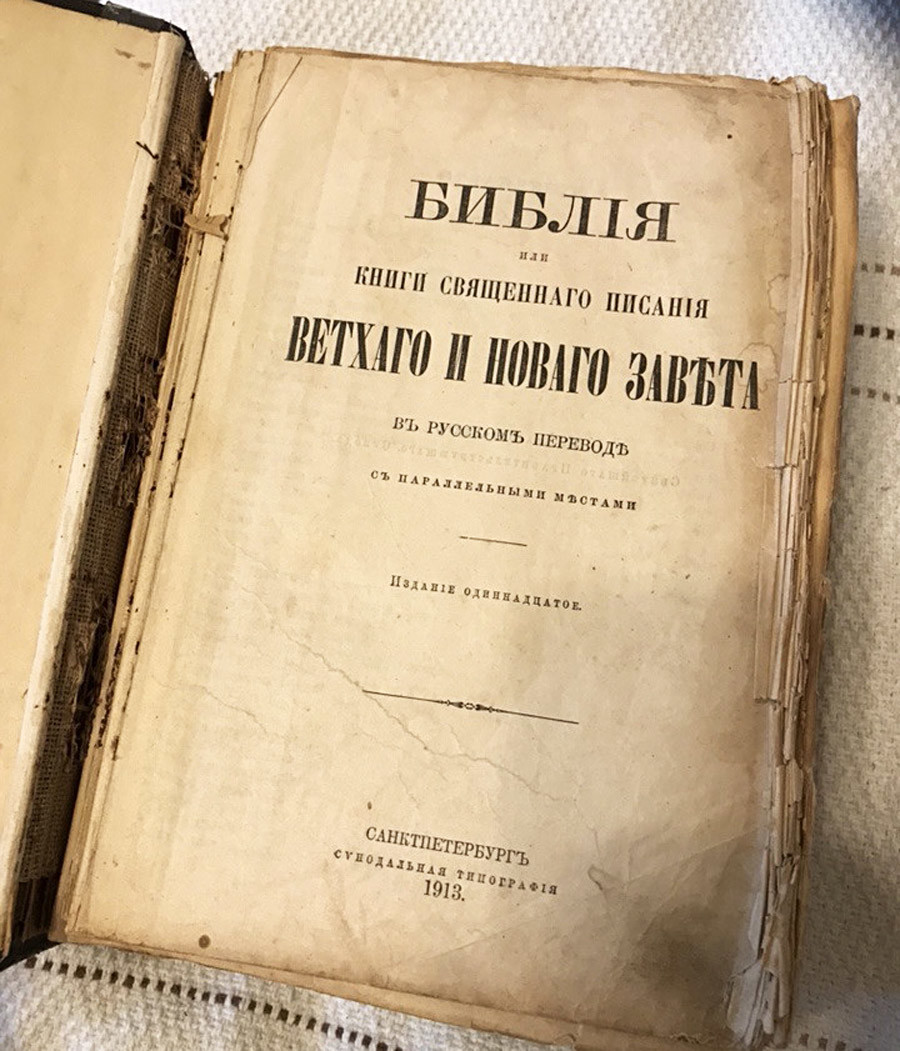
Rasputin is reading the Gospel in the new, Bolshevik orthography – without pre-revolutionary Russian letters. Moreover, he’s praying before a clearly Catholic crucifix.
6) Khodynka and coronation weren’t on the same
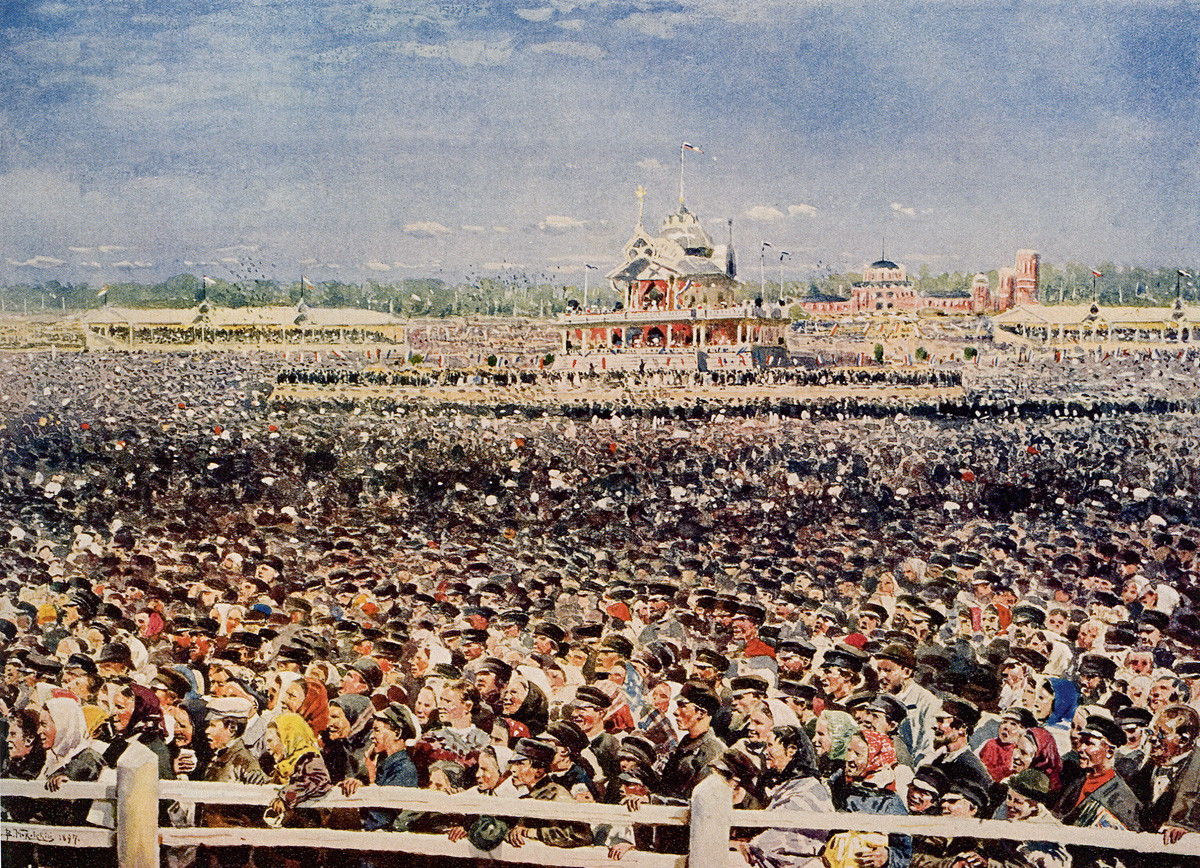
'Khodynka' by Vladimir Makovsky shows how many people were there really.
Vladimir Makovsky7) Verkhoturye Monastery is shown in an irrelevant
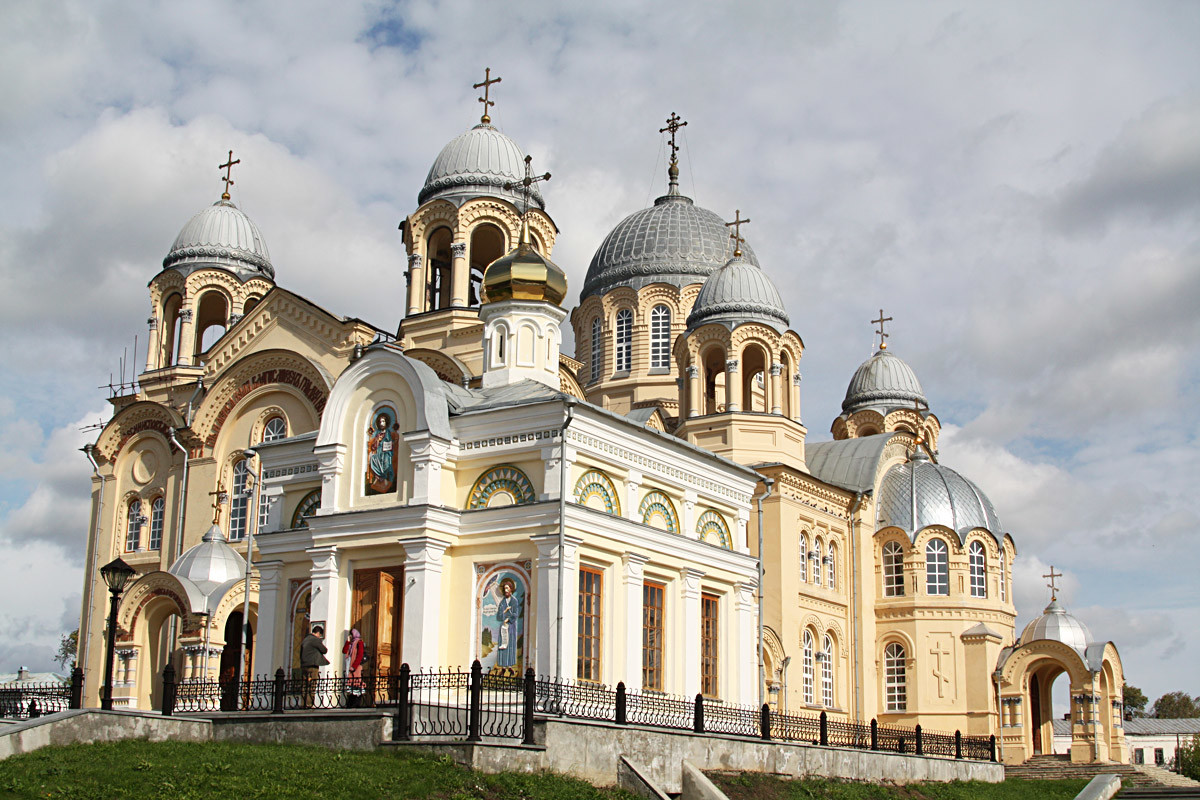
Verkhoturye Monastery. The cathedral.
Dmitry Kozlov (CC BY-SA 3.0)8) Diminished coronation
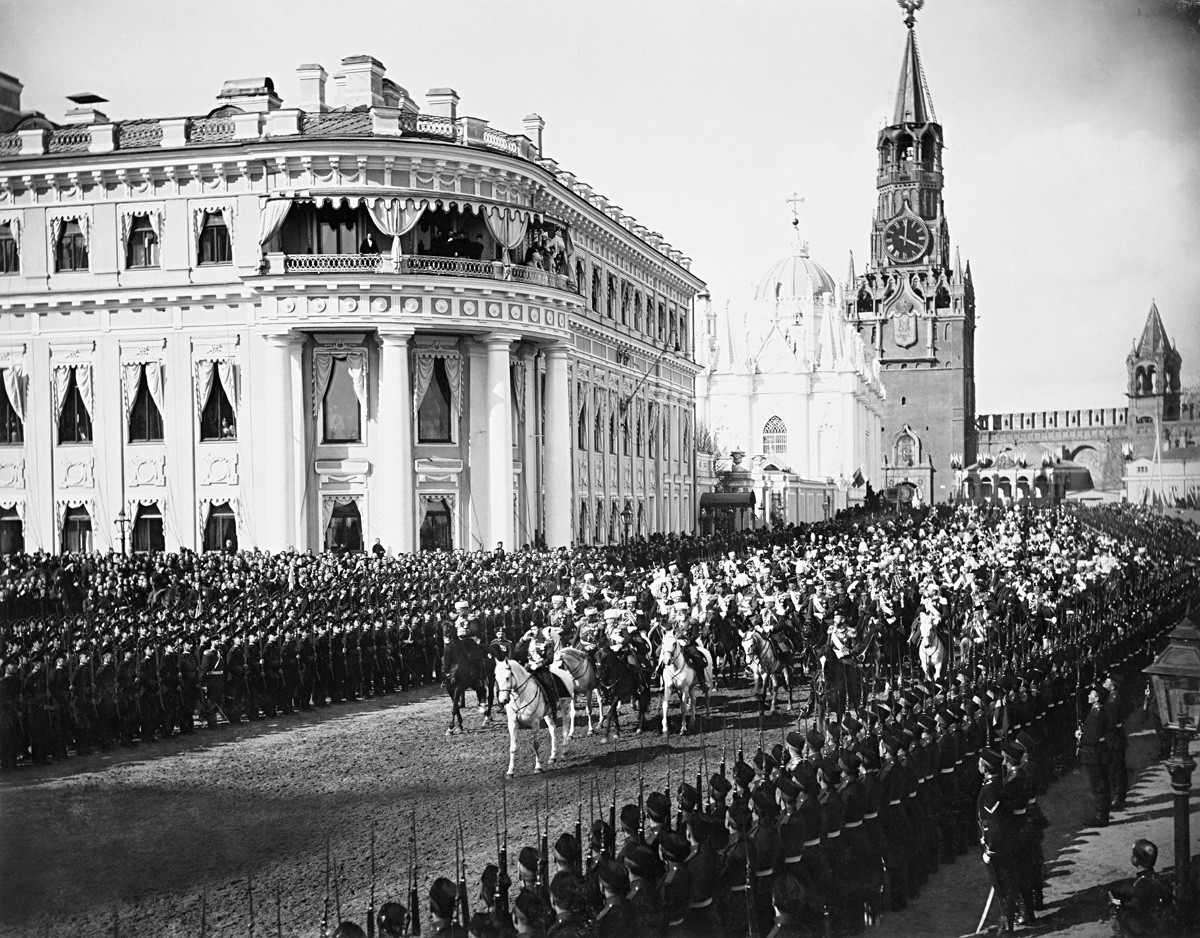
The ceremonies during Nicholas's coronation
Archive photoThe coronation shown in the series is completely fictional. Nicholas and Alexandra’s coronation was one of the most lavish in Russian history. It surely didn’t look like an ordinary ceremony in a Russian church in the presence of the closest members of the family
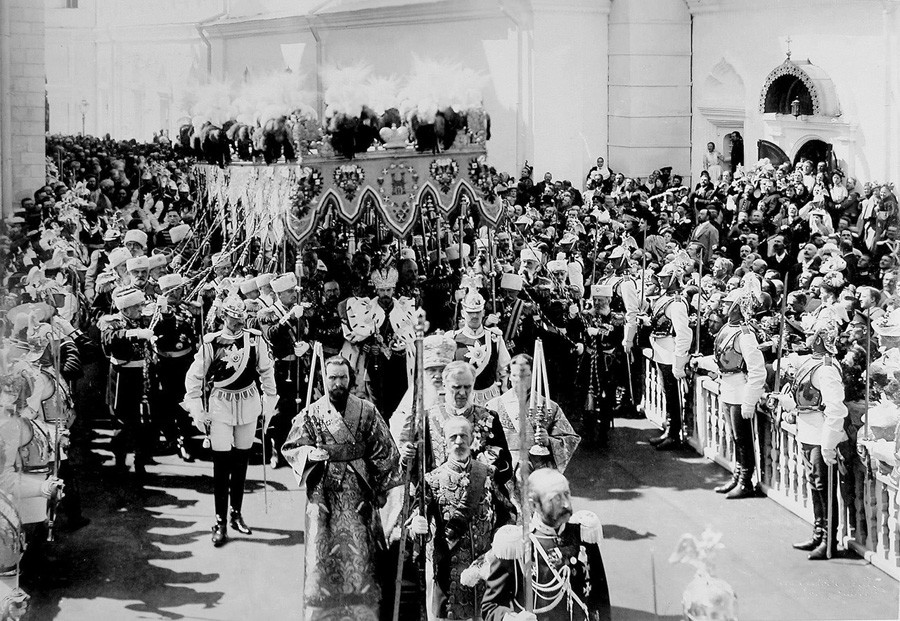
The ceremonies during Nicholas's coronation
Getty Images9) Wrong chain
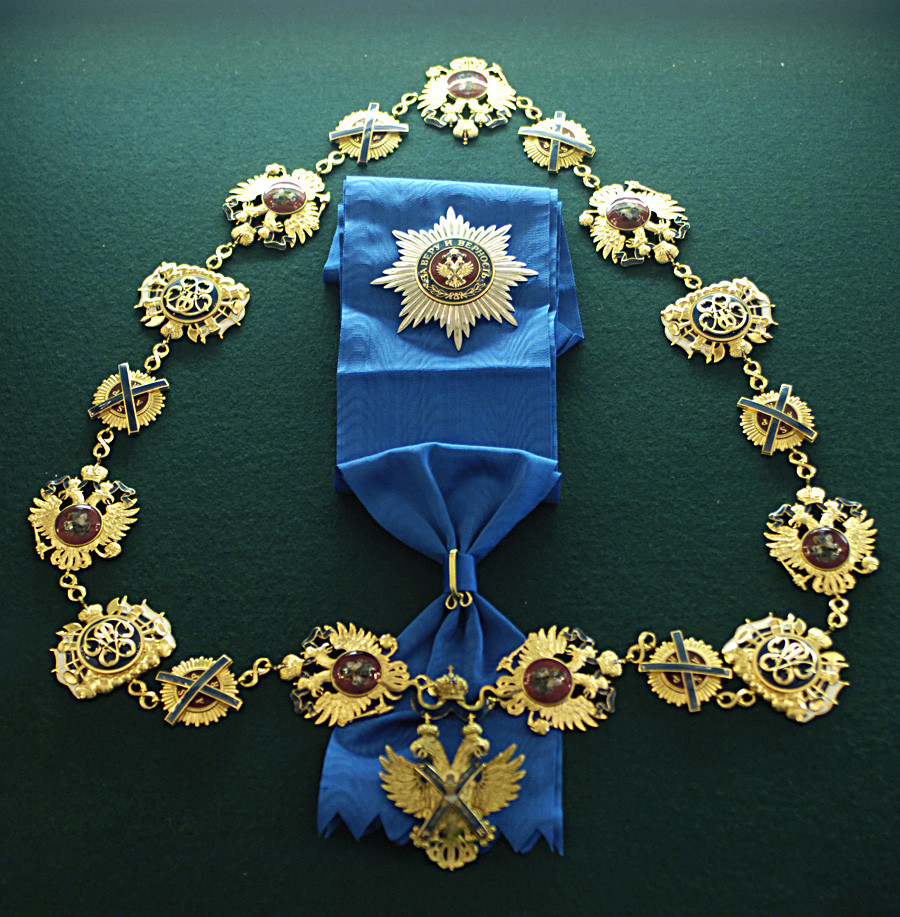
The chain of the Order of St. Andrew
Sergey Kompanichenko/SputnikThe chain for the Order of St. Andrew that Nicholas carried did indeed fall from his neck during the ceremony, but it looked nothing like it’s shown in the series. Take a look at the real chain (pic). Also, nobody, even the tsar, could walk over the chain, like the actors playing Nicholas and Alexandra did in the episode.
10) The tsar and his wife did visit the hospitals after the Khodynka tragedy
Simon Montefiore argues that Nicholas and Alexandra should have visited the hospitals after the Khodynka tragedy. In fact, they did. The tsar and tsarina gave 80,000 rubles and 1,000 bottles of Madeira wine to the wounded, and on May 19th and 20th, visited two hospitals where the wounded were being treated, along with the Grand Duke, Sergey Alexandrovich.
11) Grand Duke Sergey Alexandrovich in the series doesn’t even remotely resemble the actual Grand Duke
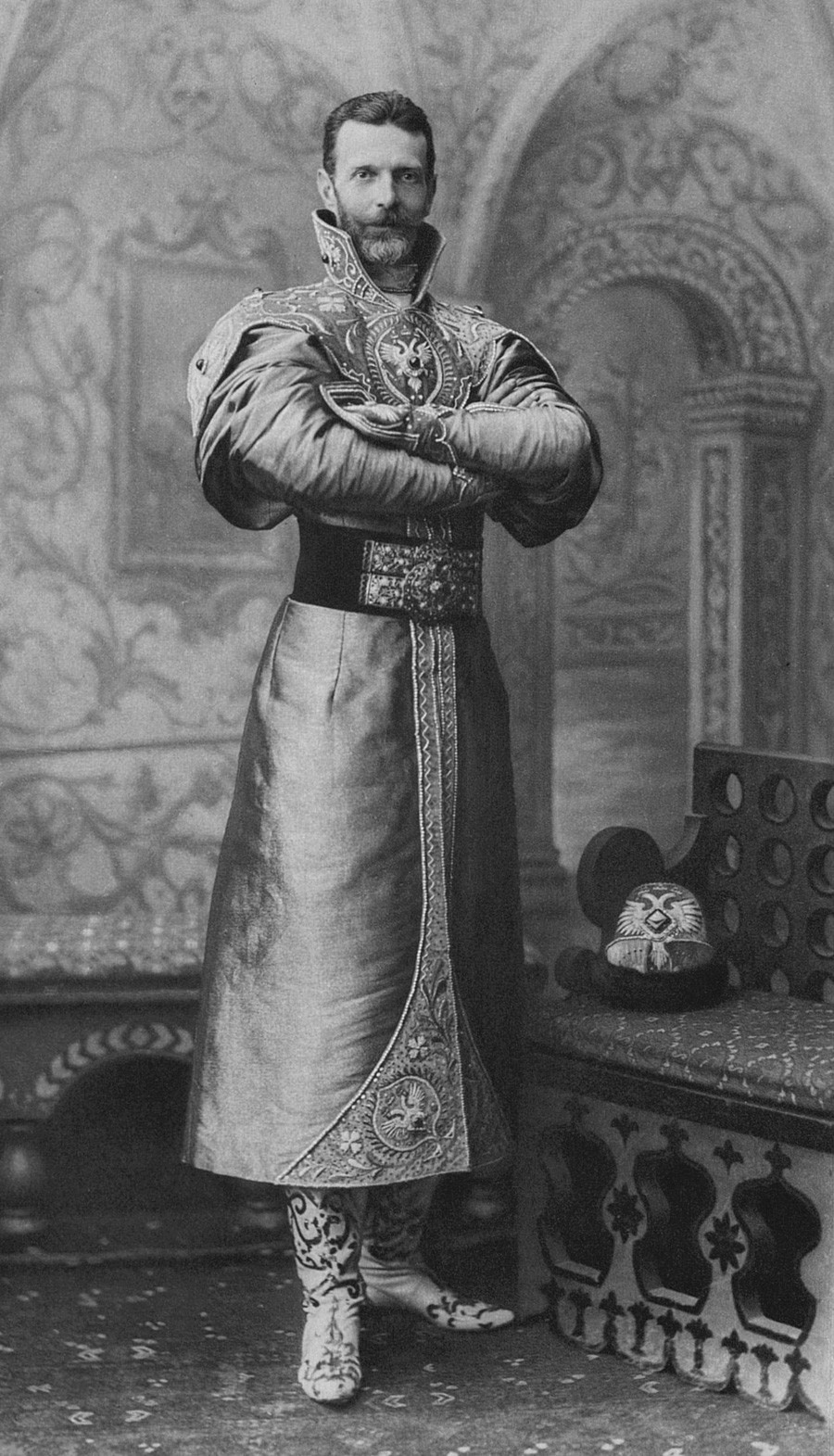
Grand Duke Sergey Alexandrovich, 1913
Getty ImagesIn the series, Grand Duke Sergey Alexandrovich is depicted as a short-statured, bitter-tempered and furious conservative. According to what the series implies, he was killed because he had been an embodiment of the autocracy. In reality, the Grand Duke was completely different and probably a much more complicated person.
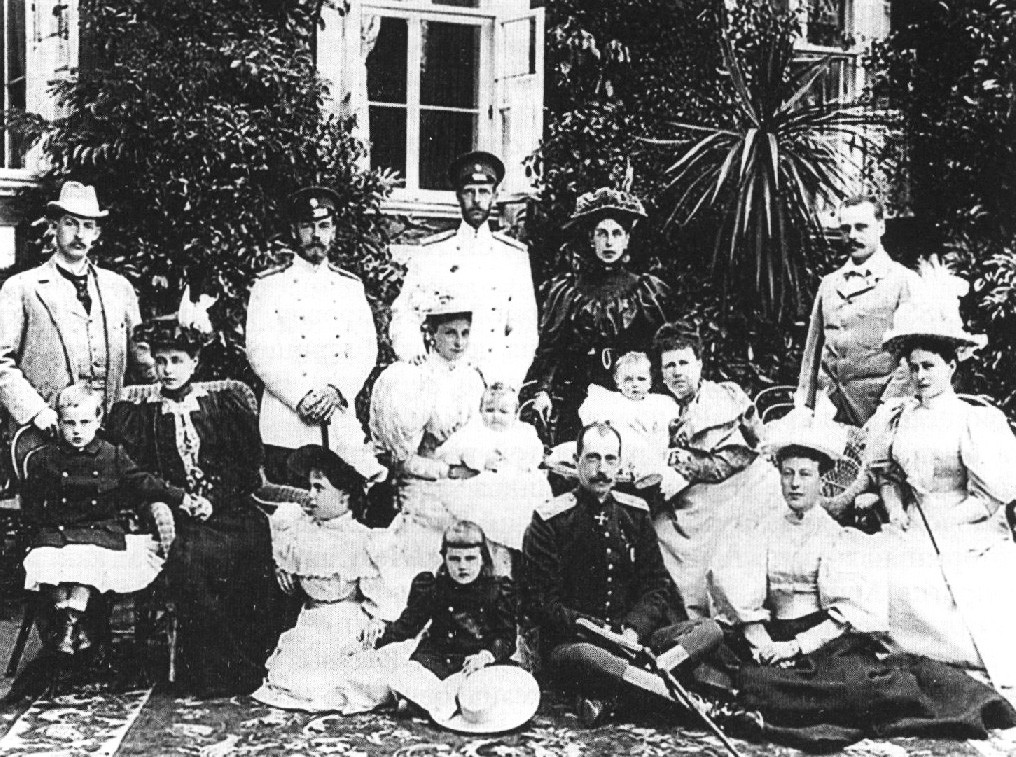
Grand Duke Sergey Alexandrovich (center) with Emperor Nicholas II (to the left from the Gran Duke)
Archive photoIndeed, he was firmly against democratic reforms. But he also looked and behaved differently. The Grand Duke was taller than Nicholas. He had gentle facial features and was blonde. He was indeed bitter-natured and caustic. Not many people liked him.
Also, there were persistent rumors about Grand Duke Sergey Alexandrovich being a homosexual. “This dry, nasty man… carried on his face sharp signs of the vice that was devouring him, the vice that had made the life of his wife, Elizaveta Fyodorovna, unbearable and drove her… to monastic life,” wrote Viktor Obninsky, a contemporary politic. The rumors about Sergey
12) The coronation wasn’t the first day of Nicholas’s reign
Contrary to what de Orellana says in the episode, coronation day, and, moreover, the day of the Khodynka tragedy
13) The royal couple wasn’t alone in Sarov
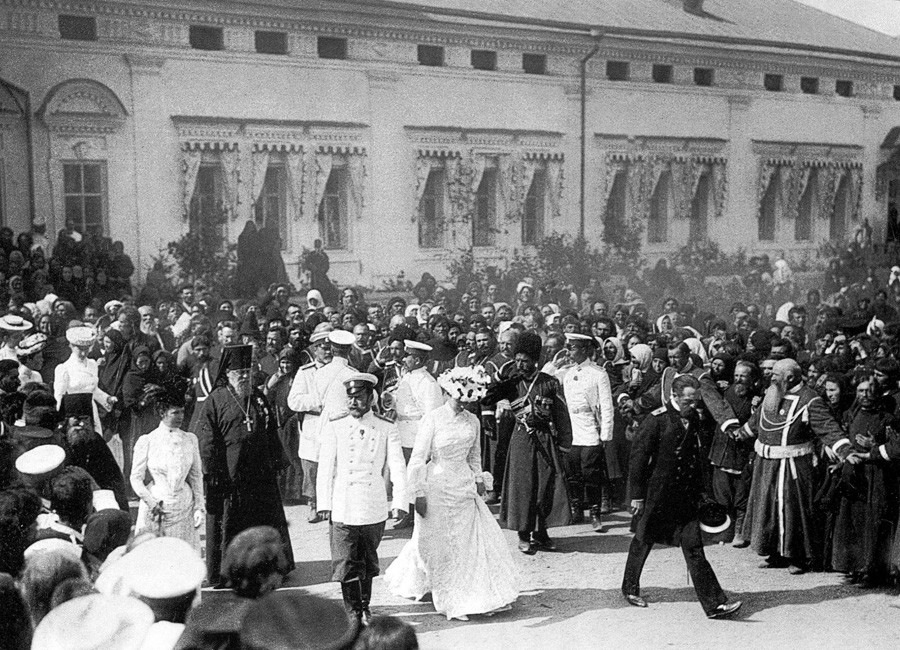
Celebrations in Sarov, 1903
Archive photoNicholas and Alexandra are shown traveling to Sarov to pray for Alix’s fertility. The Sarov journey was timed with the beatification of Saint Seraphim of Sarov. This beatification was among Nicholas’s most impressive ideological moves, as Seraphim was greatly revered among Russians. Take a look at the photos of this trip. Under no circumstances could Alix and Nicholas have stayed alone, clad in simple clothes, just praying (at least 15,000 infantry were involved in protecting the Imperial family during this visit. There were literally soldiers all over the place.)

Celebrations in Sarov, 1903
Getty ImagesAny kind of sexual intercourse (shown in the movie) during such a visit would have been utterly impossible, as well as the possibility for the tsar and his wife to be clad in such simple clothes anywhere but in their bedroom.
14) The Grand Duke wasn’t Nicholas’s main war counselor
Grand Duke Sergey Alexandrovich wasn’t the Emperor’s counselor in questions of war. It was most likely the Minister of the Interior, Vyacheslav von Plehve, who said the war with Japan would be useful.
15) Nicholas didn’t present his son at a party
Nicholas and Alexandra are shown presenting their long-awaited son and heir to the public during a cocktail party in the palace. Nicholas himself carries the boy to show him to the family. This is just ridiculous. The heir’s health and well-being were attended to very closely. Any appearance of him in public was a ceremony.
READ MORE:OPINION: Everything wrong with Netflix’s ‘The Last Czars’
16) The tsar didn’t smoke
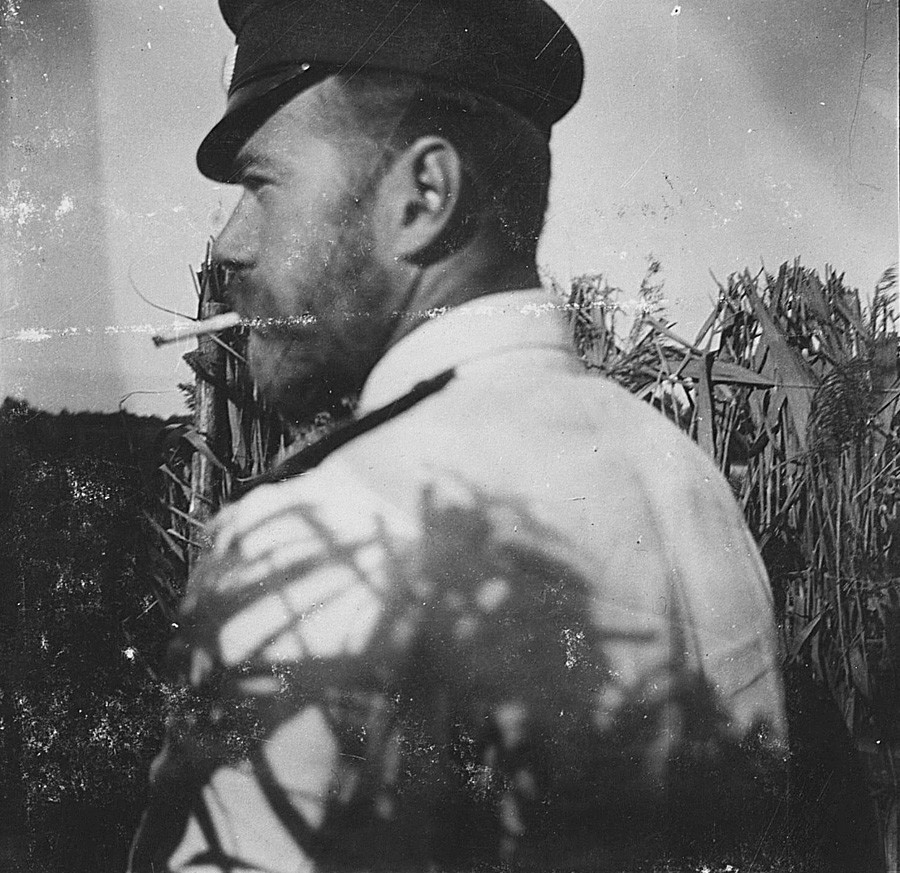
Nicholas II smoking. In this photo, a papirosa can be clearly seen in the monarch's mouth.
Archive photo17) The nickname ‘Black Princesses’ is false

Anastasia and Militsa of Montenegro
ArchiveKatherine Antonova is one of the few consultants that actually teaches Russian history, but she says
18) Nicholas wears an order he didn’t yet receive
Throughout the series, Nicholas is shown wearing an order sign on his chest. It is the Order of St. George, 4th class. The problem here is that Nicholas was only awarded this order in 1915, to raise the battle spirits of the army. And in the series, he’s seen wearing it from the beginning.
19) The wrong
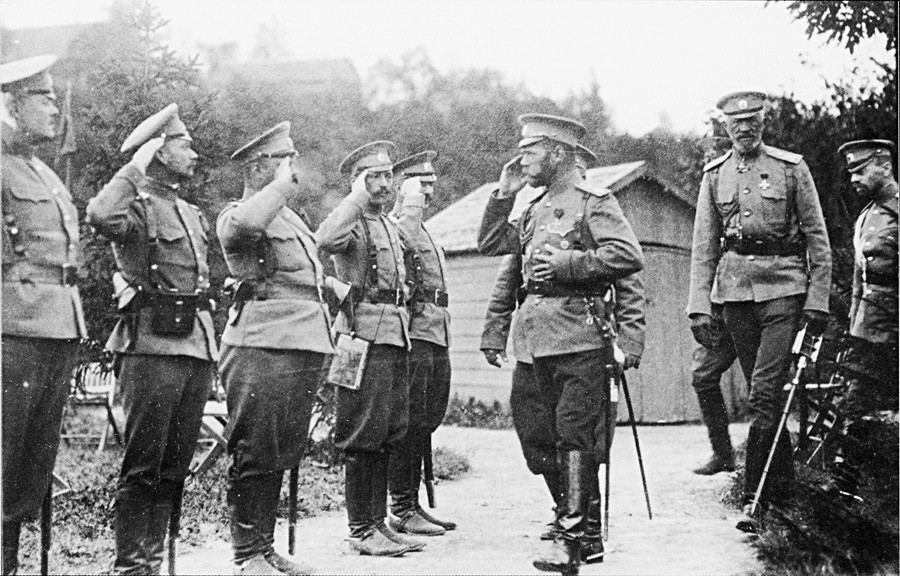
20) Nicholas wasn’t that modestly clad
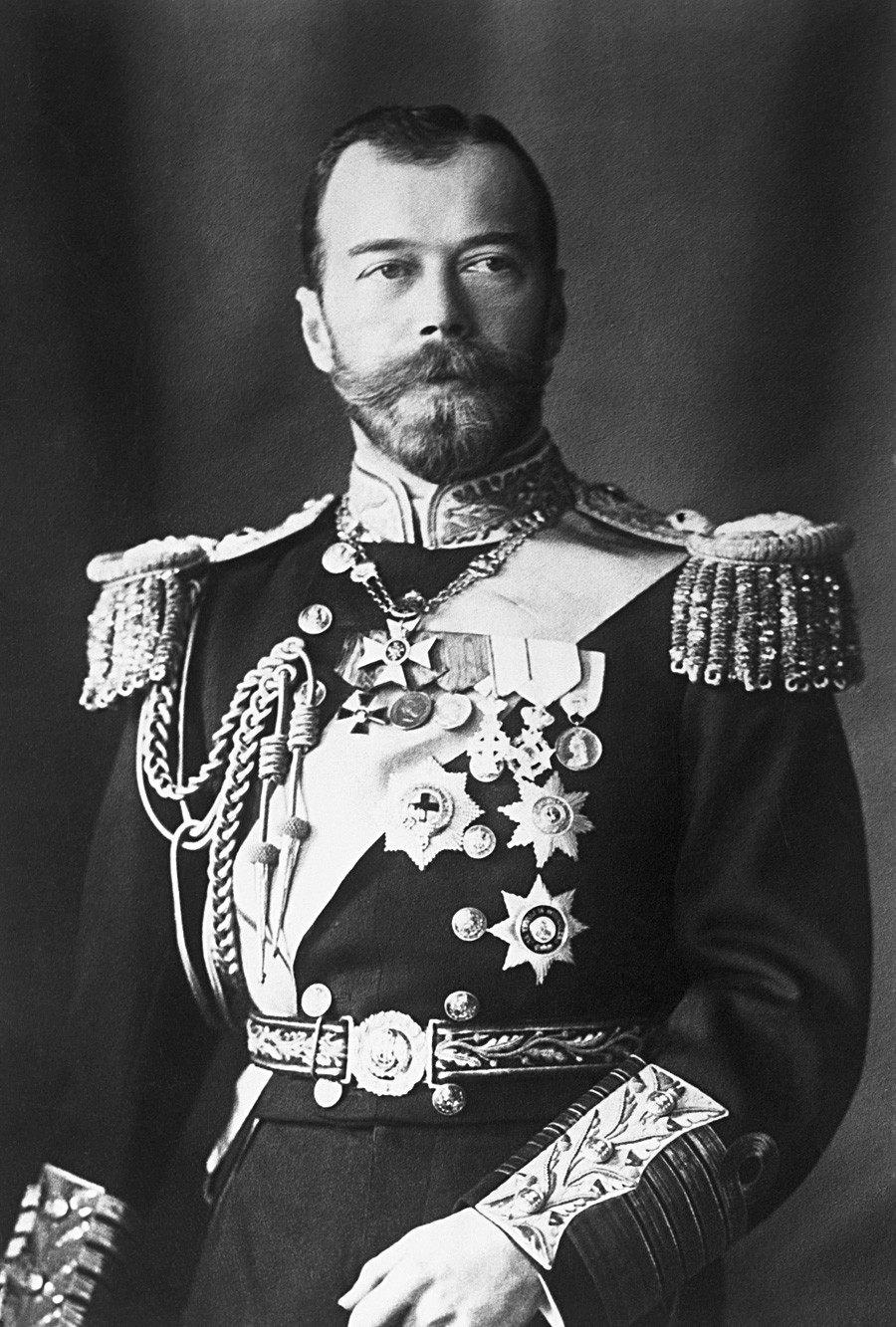
Tsar Nicholas was a very trendy man, one of Europe’s finest and richest dandies of his era. As a tsar, he was
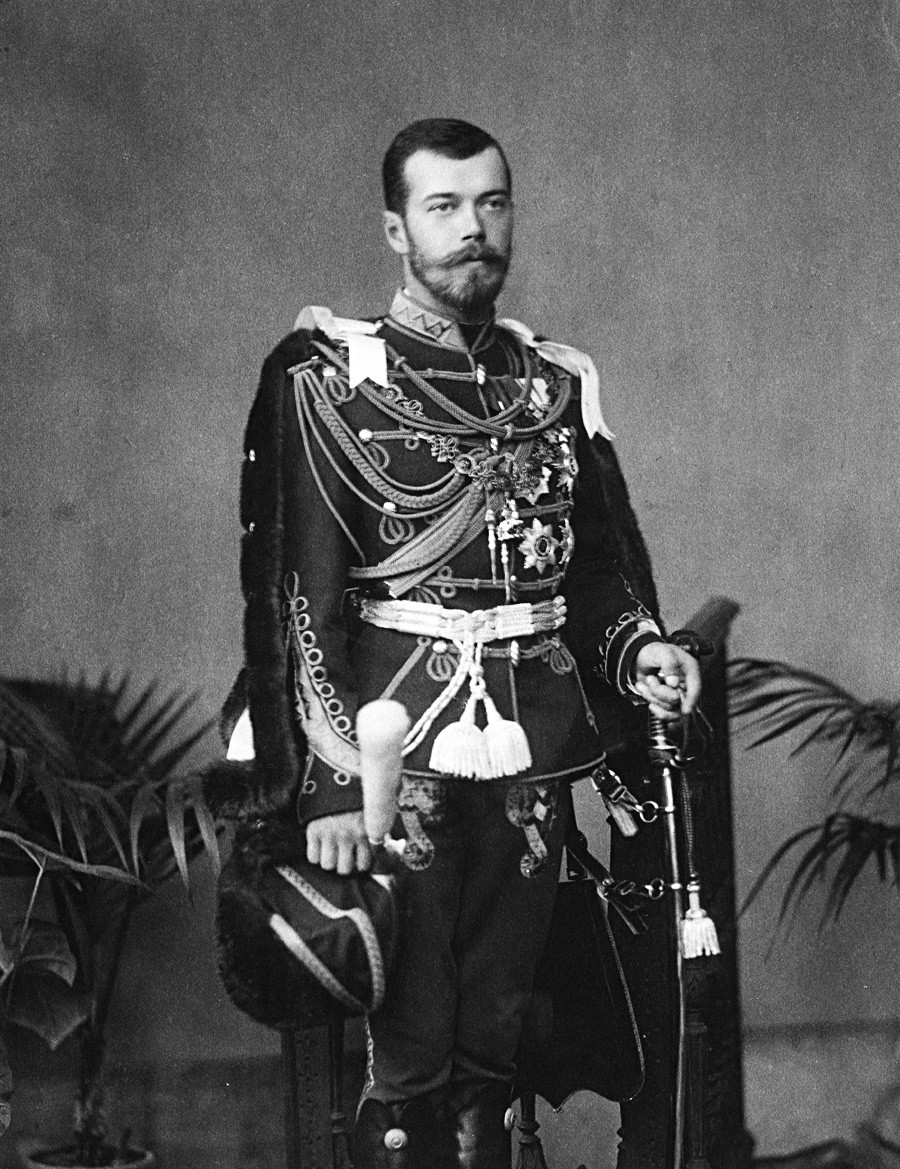
21) Sergey Alexandrovich had security
Grand Duke Sergey Alexandrovich, the tsar’s uncle, was one of the most hated persons in the country. He was guarded immensely. And in the series, he’s shown riding in a simple carriage, with people banging on his windows. In reality, no one could even approach the carriage on foot (yes, Sergey Alexandrovich was killed by Kalyayev who threw a bomb in his carriage, but it was done hastily, while the carriage had slowed down a little bit at a road crossing.)
Later, Sergey Alexandrovich is seen just walking out of his house with his wife, like an ordinary man. A lonely guard stands on his porch. This is just ridiculous.
22) Pablo de Orellana’s words about the Revolution are set against 1930s footage
While Dr. de Orellana speaks about the events of 1905,
23) Nicholas wasn’t in St. Petersburg in the days preceding Bloody Sunday
There was no debate on whether the tsar should stay in Petersburg on January 9th, 1905 (later known as Bloody Sunday). In fact, he left days before, fearing for his life. On January 6, the Baptism of Jesus Orthodox celebration day, during a religious ceremony of the blessing in the waters of the Neva river, there was an attempt at the tsar’s life (nefarious people were always trying to assassinate the tsar, even before the Bolsheviks), when one of the ceremonial cannons fired in the direction of the Emperor’s tent. It turned out to be charged with a fighting shell, leaving a policeman wounded and breaking several windows in the Winter
24) Nicholas didn’t discuss everything with his mother and

Empress Dowager Mariya Fyodorovna (1847-1928)
Getty Images25) The tsar’s duty was to his country, not his family
“Your first duty is to your family,” Alix says to Nicholas, which is essentially wrong. The essence of the tsar’s vocation, embodied in the process of his coronation, is his “wedding” to the state. The country and its people must be the primary concern of the tsar and his family. By making Alix say these words, the screenwriters undermine the meaning of the tsar’s power altogether. If his family were his first duty, they all could have fled to Europe earlier, but they didn’t, because of his responsibility as a tsar and a great discouragement that would have eventually befallen the nation had he left.
26) Bloody Sunday misinterpreted
Dr. de Orellana speaks about some children sitting in the branches of trees that were shot, and that a massacre ensued. There are no historical facts to prove what he is saying. In reality, January 9th was a massive uprising with thousands killed, both among the people and among the army. The scope and importance of this day are greatly undermined in the series, making Bloody Sunday look like just a small-time revolt.
27) Number of victims diminished
Dr. de Orellana mistakenly indicates the number of victims from January 9. The exact number is still debated; however, it is probably more than 2 or even 3 thousand.
28) Duma was not a
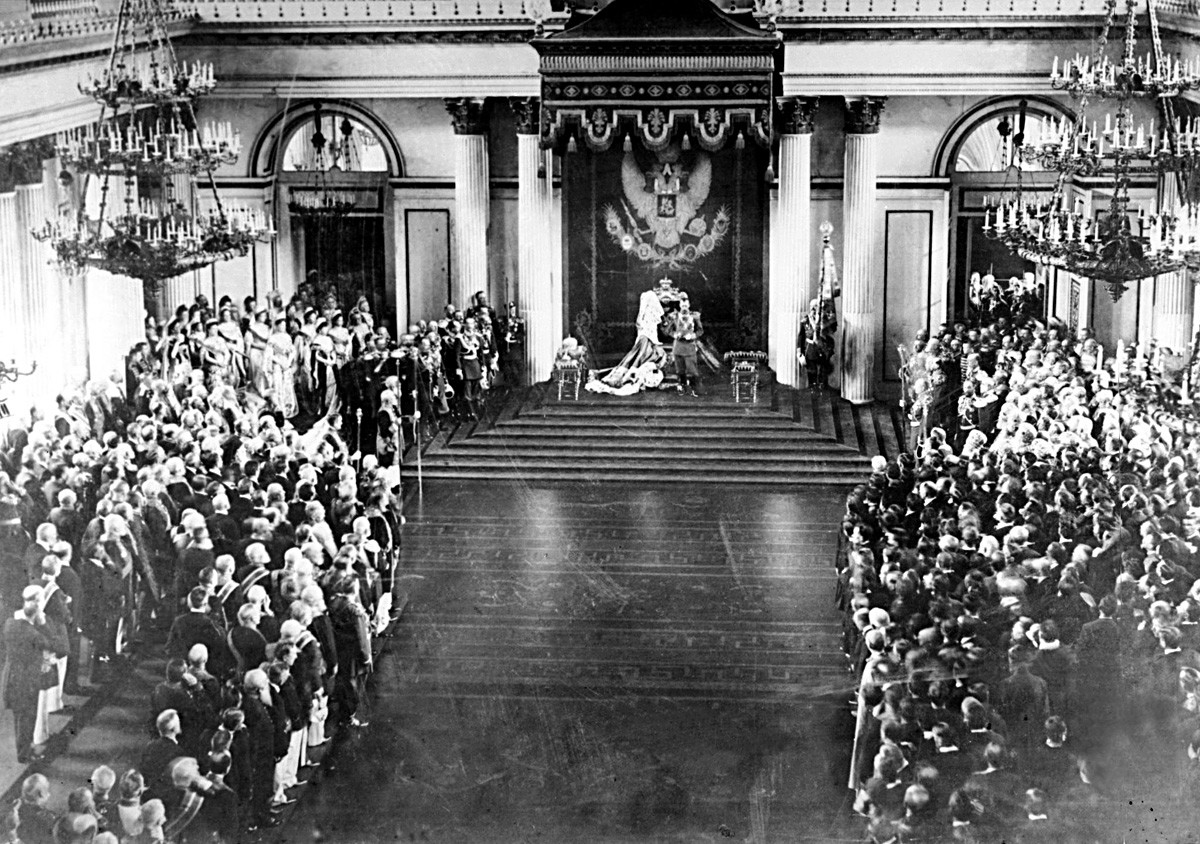
Nicholas II at the opening of the State Duma, 1906
Getty Images29) Kalyayev was hanged, not shot
Ivan Kalyayev was executed by hanging, not by a firing squad.
30) The Bolshevik Revolution didn’t continue right after 1905
The series leaves a clear impression that after the Revolution of 1905, Russia “completely slips out of control”. This is not accurate – between 1905 and the revolutionary events of 1917, there were years when Russian government still held the situation together, the Duma was created and the elections were held, with Russia flourishing as an industrial and cultural power, etc.
31) The Battle of Tsushima interpreted falsely
Dr. de Orellana says the naval Battle of Tsushima lasted for 40 minutes, while in
32)
Nicholas II didn’t finance pogroms (anti-Jewish rioting and violence). Indeed, during Nicholas’s reign, the pogroms intensified, and there were many anti-Semitic people inside the Russian army and Russian police, which made suppression of pogroms difficult. Whether the Russian government was indeed reluctant in stopping the pogroms is still debated. But such accusations are outrageous.
33) Nobody could shout at the tsar, not even the Prime Minister
Pyotr Stolypin (as well as some other characters in the series) are shown shouting at the tsar, which was impossible, at least because of the rules of the Russian civil rank system, and at least until the
34) Stolypin was unharmed after the

Stolypin's dacha after the explosion
TASS35) Rasputin didn’t try to molest Stolypin’s daughter
This is more pure fiction. Indeed, Stolypin was very suspicious of Rasputin and ordered surveillance to be put on the ‘monk’, but no contacts between Rasputin and Stolypin’s daughter are known.
36) Rasputin’s house is
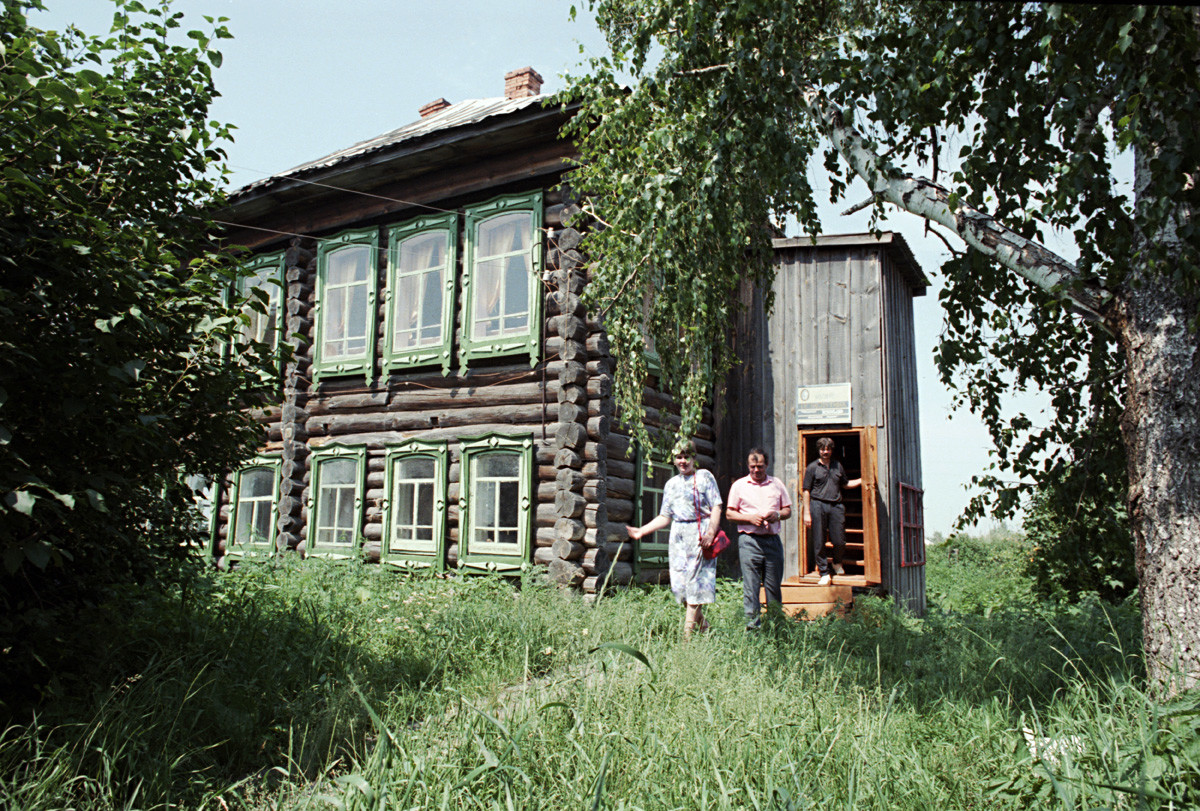
Rasputin's house in Pokrovskoye.
Archive photo37) ‘Grand Duke Nikolasha’ is nonsense
It’s obvious when Dr. de Orellana says ‘Grand Duke Nikolasha,’ it sounds like calling Queen Elizabeth II ‘Queen Lizzy,’ and we’re sorry to hear that from a historian. ‘Nikolasha’ was Grand Duke Nicholas Nikolaevich’s family nickname, and it couldn’t be normally used with his title.
38) Alix didn’t rule the country
Russian imperial power is shown in the series as a mere office job a wife can take over while her husband is away at war. ‘Concentrate on the war,’ Alexandra says to Nicholas, ‘I’ll take care of everything at home,’ as if the war was happening in some other country. After this, Alexandra occupies Nicholas’ working table and “begins to rule”, which is out of place. The Empire had the government, the Duma, the Governing Senate, an army of officials and state servants that the Empress, more or less, manipulated through a vast network of aides and servants, but she never officially controlled the government.
39) The Emperor couldn’t have an African servant
As
40) The gun that Rasputin is killed from is an

Webley .455
Alexey Shchukin/TASS41) Dr. de Orellana describing fake events
“A child is poignantly crucified by bullets on the fence near the Winter Palace,” says Dr. de Orellana, relating to us not facts, but a tale or a legend even Russians don’t know of!
42) There was no Marine Guard in Russia
Nicholas II deploys a ‘Marine Guard’ to ensure his family’s security. There was no such regiment or force in the Russian army. During the days of the Revolution, the regiments that guarded the Imperial family in Tsarskoye Selo were called His Imperial Majesty’s Own Convoy and His Imperial Majesty’s Own Regiment. In reality, they didn’t defect and protected the family until their arrest by the Provisional Government.
43) Losing track of events
By the 5th episode, the events of the series become mixed up to the point of farce. Several years are pressed into one non-continuous narrative. Professor Sean McMeekin from Bard College says: “Before long, a number of soldiers have taken to the streets. Some of them begin waving red flags, they commandeer vehicles, and by evening, it is clear that the government had lost control of public order in Petrograd.” It is not clear, however, what day he means.
By all accounts, a full riot was raging for several days during the turmoil of the Revolution. Of course, they must have been waving red flags! But there were thousands of them! And indeed, they commandeered vehicles. And even trains. And ships. It was the Russian Revolution, one of the bloodiest events in the political history of mankind, not a workers’ riot in a faraway northern town!
And when Dr. de Orellana says that the army started to defect at some point, we wonder what point he means, as different parts of the army and various garrisons were defecting chaotically, while many still stayed loyal to the tsar.
44) The Imperial family wasn’t so poor
When the Romanovs settle in Ipatiev house in Ekaterinburg in the series, they’re in rags. In fact, they were much more well off – when the kids were brought to Ipatiev house following their parents, they were traveling with 26 people in their suite, according to Nikolay Sokolov, the investigator of the Imperial family murder.
45) Wrong typeface (again!)
As Nicholas reads a letter from a mysterious benefactor, we can see that it’s written in contemporary Russian orthography.
46) The Empress couldn’t kneel in the presence of Bolshevik guards
While the Ipatiev house guards search the Romanov’s belongings, Alix is shown on her knees praying, which she would never do in the presence of Soviet guards. Even if a former tsarina, she remained one.
47) The Bolsheviks had to protect the Imperial family from the people
While discussing the fate of the Imperial family in Ekaterinburg, the historians don’t mention that the Romanovs had also to be guarded against the Russian people. When Nicholas and Alix arrived in Ekaterinburg from Tobolsk, the Bolsheviks guarding them had to hold back the crowd of people, eager to have their revenge on the tsar. Only revealing multiple Gatling guns stopped a riot and the train with the tsar headed on to the next station to save Nicholas and Alix from the crowd.
48) The tsar was not God’s “representative on Earth”
Dr. Hetherington refers to Nicholas as “God’s representative on Earth”. It’s a distorted view of the tsar’s role. During the coronation ceremony, Russian tsars were anointed for the second time in their life – to serve God’s purpose of being the Russian tsar, a mission and vocation likened to that of
If using any of Russia Beyond's content, partly or in full, always provide an active hyperlink to the original material.
Subscribe
to our newsletter!
Get the week's best stories straight to your inbox